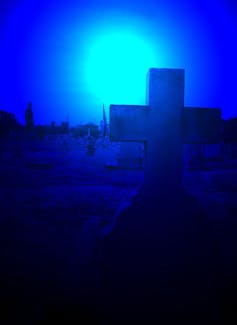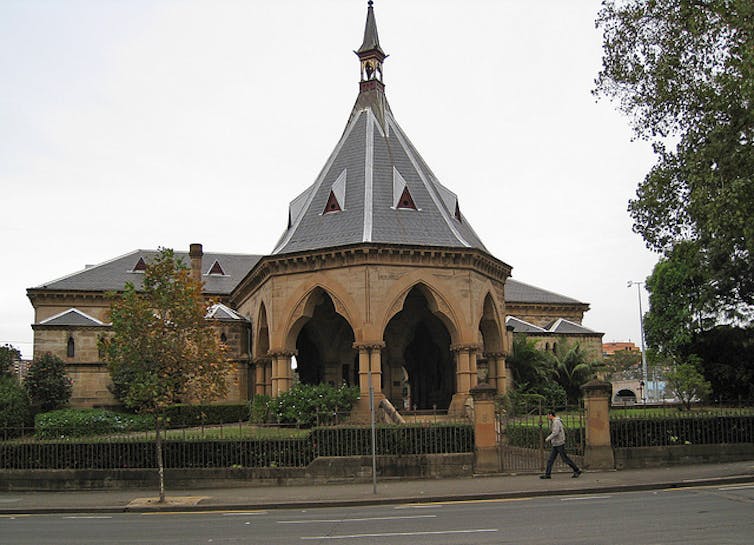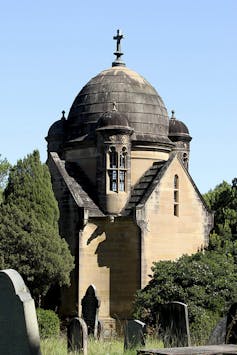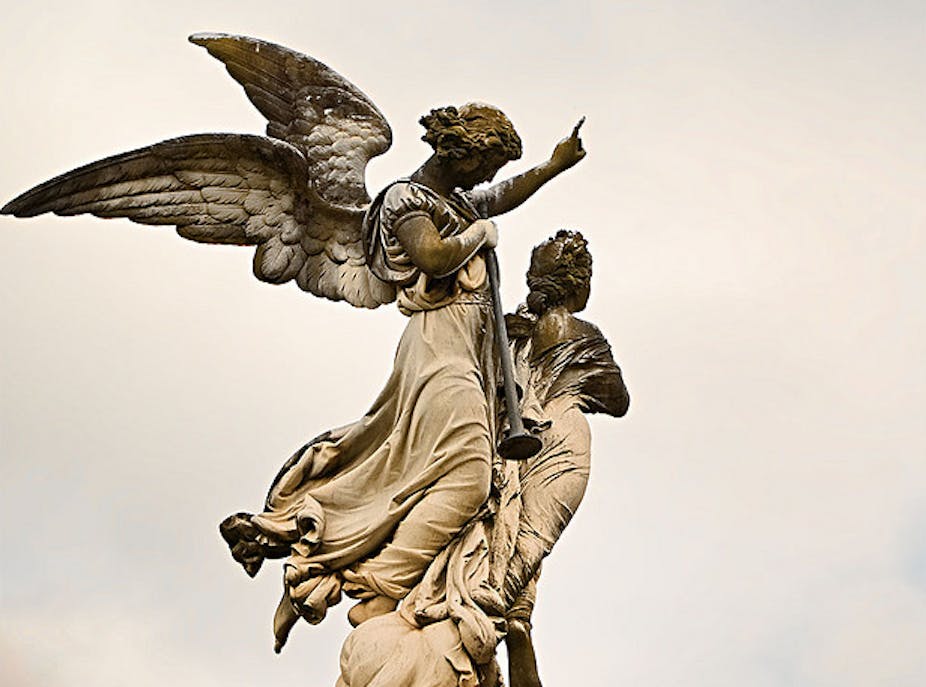Sydney’s Rookwood Cemetery, the largest necropolis in the southern hemisphere, has had its share of troubles lately. A recent ABC investigation reported on a suite of alleged governance problems, including financial issues, allegations of people removing ute-loads of stone from the grounds and complaints about gravestone tendering processes.
But all that corporate drama can seem a million miles away when you’re standing deep in the middle of the 300-hectare Great Necropolis at Rookwood, found just a short walk from Lidcombe station in Sydney’s west. Very quickly, the sounds of the city fall away.
Atheist though I am, I love taking people on tours of the religious sites of Sydney. At a mosque or a temple – somewhere just outside the comfort zone of your average secular Australian – a special kind of amazement takes over. There’s something both noble and confronting about meeting believers with deep convictions, who find certainty in graceful rituals, and who are surrounded by community.

It is the antithesis of our stridently individualistic modern persona. And playing the part of a guest on someone else’s turf is a great way of transforming our tolerance for other worldviews into engagement and understanding.
But what if the host was a little more confronting: for example, death?
In the middle of Rookwood, suddenly you’re inside the world’s largest Victorian burial ground. There’s a silence here, but one that murmurs. Each grave, each plaque, is its own rhetorical statement; in a brief number of letters and dates, in the carvings of angels or distraught faces, clasped hands, curlicues, or neo-classical decorations, an entire human life is being encapsulated. I am much more accepting of the tribulations of my own life when I stand at a grave and stare into the face of non-existence.
Rookwood is also the first great working model of Australian multiculturalism. The 1861 census was used to divide the Necropolis into denominational sections relative in size to the population.
The colonial architect James Barnet built a stunning gothic railway station in the heart of the site and, using gentle arabesques, sectioned off multiple areas: Anglicans and Catholics on one hand; Chinese and Jewish Australians on the other. Decades before Federation, Australian multiculturalism was confirmed in both his thoughtful designs and the splendid tombs and chapels that families and faiths began to construct here.

Rookwood became a space where religious sentiment was on overt display, but the model behind this display was inherently secular. For the necropolis had been inspired both by the rabid secularisation of the French Revolution and the studious tolerance of the British.
By way of a 19th-century general consensus, a cemetery was a place where one could imbibe deep moral lessons. Visiting Rookwood in its Victorian heyday was not simply for mourners, but a place where anyone could contemplate what it was, precisely, that constituted a good life. Gardens, shelters and picnic huts not only softened the pain of death for those who lived on, but all were encouraged to come and enjoy the surrounds – to, in their own way, confront death.
At the time Rookwood was built, death was far more socially acceptable than it is today. This older attitude is precisely illustrated by Irish author James Joyce in the opening chapters of his book Ulysses, where it seems the whole of Dublin has gathered to bury one of their own.
The place of death as a vital part of life, however, falls away after the World Wars. I fear we’ve turned away from the lessons death can offer.

This change in attitude can also be seen in the grave designs across the necropolis. From the splendid and perhaps bankrupting family tombs of the old section, one does not have to walk too far to see the unremarkable lawn cemeteries of the 1960s or – dare I mention them – the shopping-mall-like, musak-infested, high-rise mausoleums of most recent times.
Despite our wildest hopes, death remains a certainty; and if you find you cannot imagine your own death, nor look death in the face, then come to Rookwood. Stroll down these elegant paths and consider how you will be remembered by those around you.
You might find a peace here you cannot find elsewhere in the city. You might be inspired to join the great restoration work being done by the Friends of Rookwood community group. You might like to come to the open day next September and see inside some of the more famous vaults and take a tour of the crematorium, or see Hidden, the outdoor sculpture exhibition that is staged each year.
Or you might realise what I did on a visit years ago. Anxious about death, I sat on the edge of an old grave. I drank in the splendid sunset over the necropolis and suddenly realised: if this was the worst that death could do to me, then it would be a pleasure to go gentle into that good night.
The peace of Rookwood can be a very profound – if your ears are open to it.

